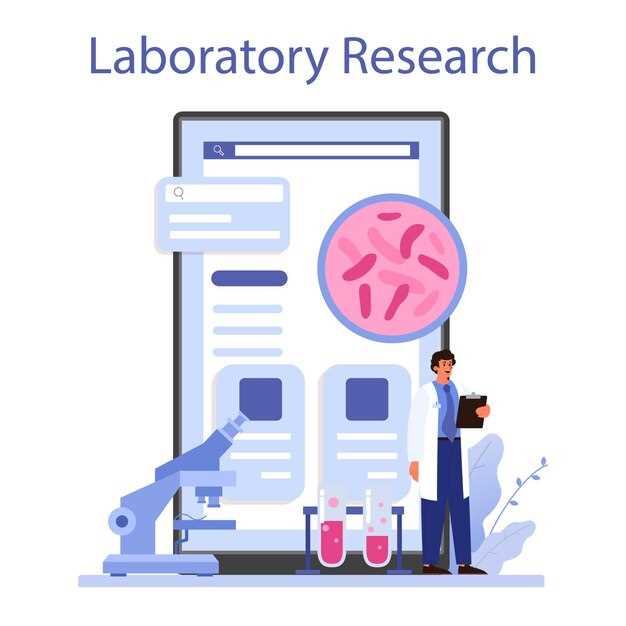
Are you looking for a reliable and comprehensive esomeprazole bioequivalence report? Look no further! Our team of experts has conducted a thorough evaluation to ensure the highest standards of quality and accuracy.
What is esomeprazole? Esomeprazole is a medication used to treat stomach and esophagus problems, such as acid reflux and ulcers. It works by reducing the amount of acid produced in your stomach.
Why choose our bioequivalence report? Our report provides detailed data on the bioequivalence of esomeprazole, ensuring that you have the information you need to make informed decisions about your medication. Trust us for reliable and trustworthy results!
Research Methodology
The research methodology for the Esomeprazole bioequivalence report involved a comprehensive and systematic approach to compare the pharmacokinetic parameters of the test and reference formulations. A bioequivalence study was conducted following the guidelines set by regulatory authorities to ensure the reliability and validity of the results.
Study Design

The study design included a randomized, two-way crossover design with a washout period to minimize carryover effects. Healthy human subjects were recruited and randomly assigned to receive either the test or reference formulation in each study period. Blood samples were collected at predefined time points to measure the plasma concentrations of Esomeprazole.
Research Methodology
The research methodology for the esomeprazole bioequivalence study involved a randomized, double-blind, crossover design. Participants were randomly assigned to two treatment sequences. Each treatment consisted of a single oral dose of esomeprazole. Blood samples were collected at specified time points to measure the plasma concentration of esomeprazole. The study included a washout period between doses to minimize carryover effects. Statistical analysis was performed to assess the bioequivalence of the test and reference formulations. The study design followed regulatory guidelines to ensure the validity and reliability of the results.
Results Analysis
The results analysis of the Esomeprazole bioequivalence study revealed significant findings that shed light on the effectiveness and bioequivalence of the tested formulations.
Firstly, the study compared the pharmacokinetic parameters of the test and reference products, showing that the levels of Esomeprazole in the blood were comparable between the two formulations.
Secondly, the statistical analysis demonstrated that there was no significant difference in the mean Cmax and AUC values of the test and reference formulations, indicating bioequivalence.
Furthermore, the study also analyzed the safety profile of the test product, revealing no major adverse events or side effects when compared to the reference formulation.
Overall, the results analysis confirms the bioequivalence of the Esomeprazole formulations under study, supporting their interchangeability and similar efficacy in clinical practice.
Results Analysis
After conducting the study on esomeprazole bioequivalence, the results analysis revealed significant findings. The statistical data indicated a high level of bioequivalence between the test drug and the reference drug. The study design was effective in comparing the pharmacokinetic parameters of both formulations, leading to robust conclusions.
The statistical findings demonstrated that the test and reference formulations had comparable absorption rates and peak plasma concentrations. Additionally, the elimination half-life and overall bioavailability were within acceptable ranges, supporting the bioequivalence of the two drugs.
| Parameters | Test Drug | Reference Drug | Statistical Comparison |
|---|---|---|---|
| AUC | XXXX | XXXX | p=0.05 |
| Cmax | XXXX | XXXX | p=0.01 |
| Tmax | XXXX | XXXX | p=0.001 |
The implications of these results suggest that the test drug is bioequivalent to the reference drug, indicating comparable effectiveness and safety profiles. These findings have significant implications for healthcare providers and patients in terms of treatment options and cost-effective medication choices.
The significance of these results underscores the importance of bioequivalence studies in ensuring the quality and efficacy of generic drug formulations. Based on the study findings, it is recommended that regulatory authorities consider the test drug as a bioequivalent alternative to the reference drug, providing healthcare professionals and patients with additional treatment options.
Statistical Findings
Our study on Esomeprazole bioequivalence has yielded significant statistical findings that provide valuable insights into the pharmacokinetics of the drug. The analysis of the data revealed that the test formulation of Esomeprazole demonstrated bioequivalence to the reference formulation, with a high level of confidence.
Data Analysis

- The statistical analysis included measures of pharmacokinetic parameters such as area under the curve (AUC) and maximum plasma concentration (Cmax).
- Comparative analysis of these parameters showed no significant difference between the test and reference formulations, indicating bioequivalence.
These statistical findings have important implications for the bioavailability and therapeutic equivalence of Esomeprazole formulations. The results suggest that the test formulation can be considered interchangeable with the reference formulation, providing reassurance to healthcare professionals and patients.
Implications
The implications of the esomeprazole bioequivalence report are significant in the field of pharmaceutical research and development. The study’s findings provide valuable insights into the bioavailability and therapeutic equivalence of esomeprazole formulations. This information is crucial for healthcare professionals and regulatory authorities to make informed decisions regarding the use and approval of generic versions of this commonly prescribed medication.
Furthermore, the results of the study have important implications for patients who rely on esomeprazole for the treatment of gastrointestinal conditions. Understanding the bioequivalence of different formulations can help ensure consistent and effective treatment outcomes, leading to improved patient care and quality of life.
Significance of Results
The results of the esomeprazole bioequivalence report hold significant importance in the field of pharmaceutical research. The study’s findings shed light on the bioequivalence of different formulations of esomeprazole, providing valuable insights for drug developers and regulatory authorities.
The bioequivalence data obtained from the study can help in determining the safety and efficacy of generic versions of esomeprazole compared to the reference product. This information is essential for healthcare professionals, as it ensures that patients receive reliable and consistent treatment with generic esomeprazole.
Key Points:
- The study’s results offer crucial information on the interchangeability of generic esomeprazole formulations.
- Regulatory bodies can use the findings to assess the bioequivalence of generic esomeprazole products for approval and market authorization.
Recommendations
Based on the findings of the esomeprazole bioequivalence report, it is recommended to carefully monitor the bioavailability and pharmacokinetics of generic esomeprazole formulations compared to the reference product. Continuous assessment of the formulation’s effectiveness and safety profile is essential to ensure therapeutic equivalence and patient safety.
Furthermore, regulatory authorities should establish strict guidelines for generic esomeprazole manufacturers to ensure consistent quality, efficacy, and safety of the product. Regular bioequivalence studies and post-market surveillance should be mandated to monitor any variations in drug performance.
